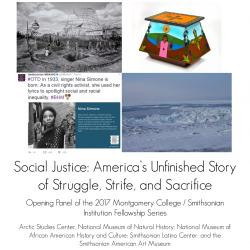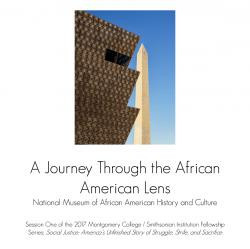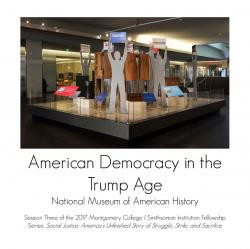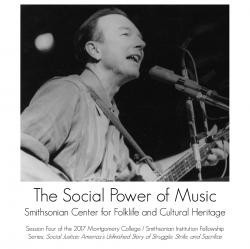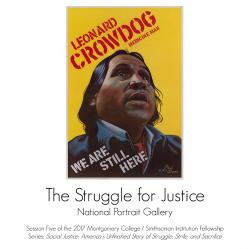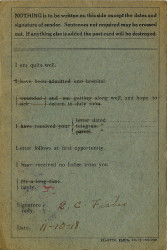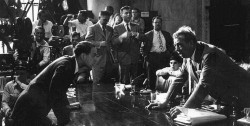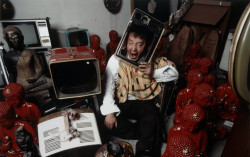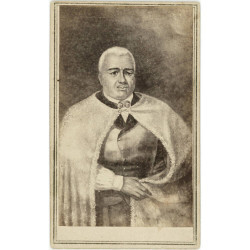Tess Porter
User Experience Strategist (she/her)
Smithsonian Office of Educational Technology
I'm the former User Experience Strategist at the Smithsonian Office of Educational Technology. Here, I focused on the use of digital museum resources to support teaching and learning. My work draws on my experience as a museum educator, digital analyst, usability researcher, and content designer. I hold a B.A. in Anthropology and a B.A. in Art History from University Colorado Boulder, and an M.S. in Museums and Digital Culture with an Advanced Certificate in User Experience from Pratt Institute.
Tess Porter's collections
Yup'ik Parka: Object Analysis
<p>This introductory student activity explores the Yup'ik gut parka, a type of garment created from the intestines of sea mammals to protect sea hunters from wind, rain, and stormy seas. The Yup'ik, native to Alaska and coastal Canada, used these not only for hunting but also spiritual occasions, such as religious ceremonies. Collection includes: two parkas, one for hunting and one for ceremonies; a map of the geographic boundaries of the Yup'ik before the arrival of Euro-American settlers; and a video of modern Yup'ik discussing the traditional process of creating these garments and the importance of conserving and continuing this tradition today.</p>
<p>Collection can be used as an introductory activity to an investigation of: Yup'ik culture, Yup'ik relationships to their environment, Arctic cultures, Native American innovations, or the importance of continuing traditions.<br /></p>
<p>Keywords: american indian, sea mammals, gutskin, conservation, yupik<br /></p>
 Tess Porter
Tess Porter
5
How Are Robots Changing Human Life?
<p>This collection explores the essential question: How are robots changing human life? Students will lead an inquiry into this question through a variety of resources - objects, videos, articles, and websites - examining the history of robotics from the 16th century to the present, the problems robot designers have attempted to address with their inventions, and how they try to address them. Supporting questions to scaffold students' inquiry include: What problems were these robots designed to address? Have these problems changed over time? Have strategies for addressing these problems changed over time?</p>
 Tess Porter
Tess Porter
22
Social Justice: Opening Panel Resources
<p>This collection previews the opening panel of the 2017 Montgomery College / Smithsonian Institution Fellowship seminar series, <em>Social Justice: America's Unfinished Story of Struggle, Strife, and Sacrifice</em>. Four Smithsonian staff members will speak at this event: Igor Krupnik (Arctic Studies Center, Department of Anthropology, National Museum of Natural History), Lanae Spruce (National Museum of African American History and Culture), Ranald Woodaman (Smithsonian Latino Center), and E. Carmen Ramos (Smithsonian American Art Museum).</p>
<p>Each text annotation in this collection contains each speaker's presentation title, description, and bio. Following each text annotation are resources and questions chosen by the presenters for participants to consider before the panel itself.</p>
<p>#MCteach<br /></p>
 Tess Porter
Tess Porter
17
Social Justice: Center for Folklife and Cultural Heritage Resources
<p>This collection previews the fourth seminar of the 2017 Montgomery College / Smithsonian Institution Fellowship seminar series, <em>The Social Power of Music</em>. Two staff members from the Smithsonian Center for Folklife and Cultural Heritage will lead this event: James Deutsch and Atesh Sonneborn.</p>
<p>Resources and questions included in this collection have been chosen by the presenters for participants to explore and consider before the seminar itself. Two resources, included at the end of the collection, are optional materials for those interested in addtional background information on Smithsonian Folkways.</p>
<p>#MCteach</p>
 Tess Porter
Tess Porter
7
Social Justice: National Portrait Gallery Resources
<p>This collection previews the fifth and final seminar of the 2017 Montgomery College / Smithsonian Institution Fellowship seminar series, <em>The Struggle for Justice</em>. Two National Portrait Gallery staff members will lead this event: David Ward and Briana Zavadil White.</p>
<p>Resources and questions included in this collection have been chosen by the presenters for participants to explore and consider before the seminar itself. </p>
<p>#MCteach</p>
 Tess Porter
Tess Porter
24
Letter Writing and Censorship in World War I
<p>This activity has students investigate experiences of servicemen in World War I through primary sources - censored U.S. Army mail postcards and envelopes. Students will compare and contrast these primary sources to examine how censorship affected communication between servicemen and their loved ones, while building an understanding of how U.S. Army mail censorship was implemented and why it was necessary. Using two Project Zero Visible Thinking routines, this activity is designed to spark further inquiry into World War I and the experiences of servicemen. The activity ends with an opportunity to learn more by examining a parody of the form postcard written by a British serviceman in his diary.</p>
<p>Information on how to use this collection in the classroom can by found by clicking <em>Read More »</em>. </p>
<p>This collection was created in conjunction with the National Postal Museum's "My Fellow Soldiers: Letters from World War I" teacher workshop (July 19, 2017). It focuses on two of the many postcards from <a href="https://learninglab.si.edu/collections/my-fellow-soldiers-postcards-from-world-war-i/HPrCVWkR1wqjpK3k#r" target="_blank">this topical collection</a> to demonstrate its use in a secondary classroom. #NPMTeacherPrograms</p>
<p>Keywords: WWI, WW1, the great war, army, military, soldiers, soldier, primary source, project zero, thinking routine</p>
 Tess Porter
Tess Porter
9
Asian Pacific American Authors
<p>This topical collection about Asian Pacific American authors includes portraits, interviews, and book reviews. </p>
<p>Teachers and students may use this collection as a springboard for classroom discussions. This collection is not comprehensive but rather provides a launching point for research and study. </p>
<p><em>This Smithsonian Learning Lab collection received Federal support from the Asian Pacific American Initiatives Pool, administered by the Smithsonian Asian Pacific American Center. </em> </p>
<p>Keywords: Jhumpa Lahiri, Indian American, Carlos Bulosan, America is in the Heart, Filipino American, Maxine Hong Kingston, Chinese American, Julie Otsuka, Japanese American, Chang-rae Lee, Korean American, Anor Lin, Sadakichi Hartmann, A.X. Ahmad, Ava Chin, P. S. Duffy, Eddie Huang, Yiyun Li, Valynne Maetani, Viet Thanh Nguyen, Vietnamese American, Ellen Oh, Vu Tran, Thrity Umrigar, literature<br /></p>
<p>#APA2018</p>
 Tess Porter
Tess Porter
28
Asian Pacific Americans in Sports
<p>This topical collection about important Asian Pacific American athletes and sports innovators includes portraits, artifacts, blog posts, and a video. <br /></p>
<p>Teachers and students may use this collection as a springboard for classroom discussions about Asian Pacific American representation in sports. This collection is not comprehensive but rather provides a launching point for research and study. </p>
<p><em>This Smithsonian Learning Lab collection received Federal support from the Asian Pacific American Initiatives Pool, administered by the Smithsonian Asian Pacific American Center. </em></p>
<p>Keywords: Duke Kahanamoku, Hawaiian, Pedro Flores, Filipino American, Philippines, Apolo Ohno, Japanese American, Kristi Yamaguchi, Craig Beardsley, Chinese American, Darsh Singh, Indian American, Sikh, Olympics, surfing, surfer, swimmer, swimming, yo-yo, yo-yoing, speed skating, ice skating, 9-man volleyball, rowing, baseball, basketball</p>
<p>#APA2018<br /></p>
 Tess Porter
Tess Porter
20
Immigration Policies and Legislation Affecting Asian Pacific Americans
<p>This topical collection includes resources about immigration policies and legislation that affected, or specifically targeted, immigrants and those with ancestry from Asia and the Pacific Islands. The policies and legislation profiled in this collection are not the only ones that did so by any means, however, they are some of the most significant. Collection includes newspapers, objects, portraits, articles, and more.</p>
<p>Teachers and students may use this collection as a springboard for classroom discussions, such as those about immigration policy and/or discrimination. This collection is not comprehensive but rather provides a launching point for research and study.
</p>
<p><em>This Smithsonian Learning Lab collection received Federal support from the Asian Pacific American Initiatives Pool, administered by the Smithsonian Asian Pacific American Center. </em></p>
<p>Keywords: chinese exclusion act, 1882, wong chin foo, immigration act of 1917, literacy act, asiatic barred zone act, angel island, japanese incarceration, japanese internment, executive order 9088, 1942, world war ii, world war 2, immigration and nationality act of 1965, hart-celler act, immigration act of 1990, h-1b visa</p>
<p>#APA2018 #EthnicStudies</p>
<p><br /></p>
 Tess Porter
Tess Porter
53
Japanese American Incarceration: Camp Objects
<p>This topical collection includes objects used by inmates in Japanese American Incarceration camps. It is one in a series of collections, each containing different types of resources, about the Japanese American Incarceration; see also <a href="http://learninglab.si.edu/q/ll-c/gCGyk6eEyx7hGU4a">Japanese American Incarceration: Images of Camp Life</a>, <a href="http://learninglab.si.edu/q/ll-c/yqzp7FXFJtCqPsik">Japanese Incarceration: Publications, Letters, and Other Documents</a>, and <a href="http://learninglab.si.edu/q/ll-c/219EPFjW3g1MKqND">Japanese American Incarceration: Articles and Videos about Inmate Experiences</a>.</p>
<p>In February 1942, following the bombing of Pearl Harbor, President Roosevelt signed Executive Order 9066 and authorized the imprisonment of approximately 75,000 Americans of Japanese ancestry and 45,000 Japanese nationals in incarceration camps. This order was not rescinded until 1945.</p>
<p>Teachers and students may use this collection as a springboard for classroom discussion; for example, what types of objects inmates created during their incarceration and why they created these objects. This collection is not comprehensive but rather provides a launching point for research and study.
</p>
<p><em>This Smithsonian Learning Lab collection received Federal support from the Asian Pacific American Initiatives Pool, administered by the Smithsonian Asian Pacific American Center.</em>
</p>
<p>Keywords: internment camp, world war ii, ww2, wwii, gaman</p>
<p>#APA2018 </p>
 Tess Porter
Tess Porter
42
Japanese American Incarceration: Articles and Videos about Inmate Experiences
<p>This topical collection includes articles and videos about Japanese American experiences in incarceration camps. The collection highlights four individuals and their stories: Fred Korematsu, a civil rights activist; Minoru Yasui, a lawyer and civil rights advocate; Norman Mineta, a politician who grew up in the camps; and Isamu Noguchi, an artist who self-deported himself to an incarceration camp. Other important articles and videos about inmate experiences are located at the end. This collection is one in a series of collections, each containing different types of resources, about the Japanese American Incarceration; see also <a href="http://learninglab.si.edu/q/ll-c/gCGyk6eEyx7hGU4a">Japanese American Incarceration: Images of Camp Life</a>, <a href="http://learninglab.si.edu/q/ll-c/yqzp7FXFJtCqPsik">Japanese Incarceration: Publications, Letters, and Other Documents</a>, and <a href="http://learninglab.si.edu/q/ll-c/D1atcYAXArxq55uY">Japanese American Incarceration: Camp Objects</a>.</p>
<p>In February 1942, following the bombing of Pearl Harbor, President Roosevelt signed Executive Order 9066 and authorized the imprisonment of approximately 75,000 Americans of Japanese ancestry and 45,000 Japanese nationals in incarceration camps. This order was not rescinded until 1945.
</p>
<p>Teachers and students may use this collection as a springboard for classroom discussion. This collection is not comprehensive but rather provides a launching point for research and study.
</p>
<p><em>This Smithsonian Learning Lab collection received Federal support from the Asian Pacific American Initiatives Pool, administered by the Smithsonian Asian Pacific American Center.</em>
</p>
<p>Keywords: internment camp, world war ii, ww2, wwii</p>
<p>#APA2018
</p>
 Tess Porter
Tess Porter
30
Hawaiian Monarchs
<p>This topical collection includes resources related to the eight monarchs of the Kingdom of Hawaii. In order of succession, the monarchs are: Kamehameha I (r. 1810 - 1819); Kamehameha II (r. 1819 - 1824); Kamehameha III (r. 1825 - 1854); Kamehameha IV (r. 1855 - 1863); Kamehameha V (r. 1863 - 1872); Lunalilo (r. 1873 - 1874); Kalākaua (r. 1874 - 1891); and Liliʻuokalani (r. 1891 - 1893). </p>
<p>The Kingdom of Hawaii was established as a constitutional monarchy in 1810 by King Kamehameha I. In 1893, a coup led by American businessmen driven by sugar and pineapple business interests in the Hawaiian islands overthrew Queen Lili'uokalani. Despite native protests and Lili'uokalani's efforts to reclaim the throne, the United States annexed Hawaii as a territory in 1898. Hawaii became an American state in 1959.</p>
<p>This collection is not comprehensive but rather provides a launching point for further research and study.</p>
<p><em>This Smithsonian Learning Lab collection received Federal support from the Asian Pacific American Initiatives Pool, administered by the Smithsonian Asian Pacific American Center. </em></p>
<p>Keywords: Kamamalu, Emma, Kapi'olani, Kapiolani, Kalakaua, Liliuokalani, Hawaiian, royals, royalty</p>
<p>#APA2018</p>
 Tess Porter
Tess Porter
37

